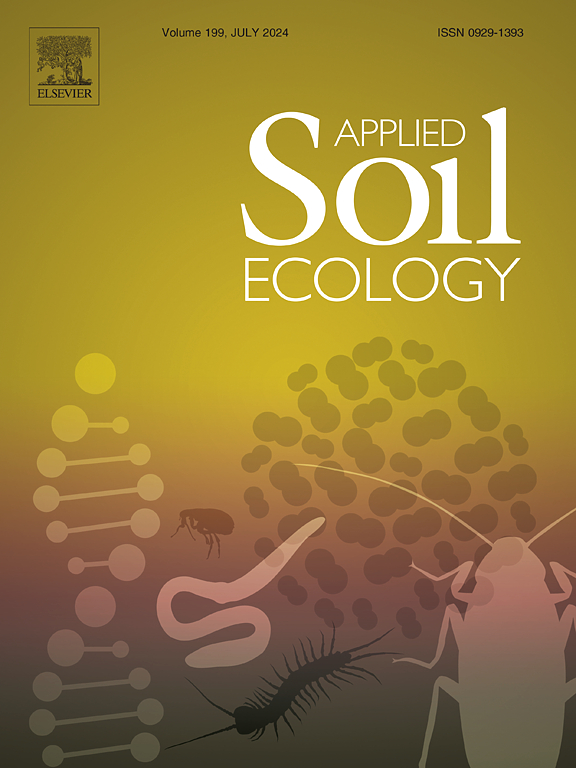Comammox Nitrospira and ammonia-oxidizing bacteria are metabolically active in a subtropical estuarine wetland
IF 4.8
2区 农林科学
Q1 SOIL SCIENCE
引用次数: 0
Abstract
Plant species profoundly influence soil microorganisms, yet their impact on active ammonia-oxidizing microorganisms remains largely unclear in subtropical estuarine wetlands. Here, we employed DNA stable isotope probing (DNA-SIP) technique to identify the active ammonia oxidizers under two typical plant species, Phragmites australis and Spartina alterniflora, as well as on a bare tidal flat in the Min River estuary. Our results revealed that comammox Nitrospira and ammonia-oxidizing bacteria (AOB) rather than archaea (AOA) were metabolically active in the P. australis and bare tidal flat soils. However, in S. alterniflora soils, the activity of ammonia oxidizers was inhibited, highlighting the critical role of plant species in shaping their community. The active ammonia oxidizers were primarily dominated by Nitrosomonas for AOB and clade A.1 for comammox Nitrospira. In comparison, bare tidal flat soils had a lower proportion of Nitrosospira and a higher relative abundance of comammox Nitrospira clade A.2 than those associated with P. australis. Taken together, our findings emphasize the importance of AOB and comammox Nitrospira, rather than AOA, in the nitrification processes within coastal wetlands, and underscore the critical role of plant species as a mediator.
求助全文
约1分钟内获得全文
求助全文
来源期刊

Applied Soil Ecology
农林科学-土壤科学
CiteScore
9.70
自引率
4.20%
发文量
363
审稿时长
5.3 months
期刊介绍:
Applied Soil Ecology addresses the role of soil organisms and their interactions in relation to: sustainability and productivity, nutrient cycling and other soil processes, the maintenance of soil functions, the impact of human activities on soil ecosystems and bio(techno)logical control of soil-inhabiting pests, diseases and weeds.
 求助内容:
求助内容: 应助结果提醒方式:
应助结果提醒方式:


